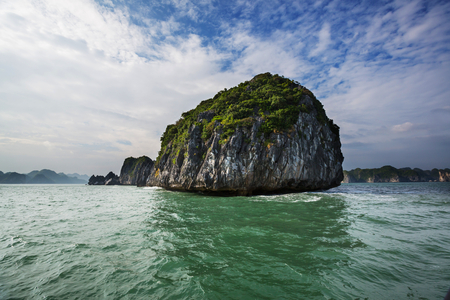CAM Comment: Part 1 of this blog post series aims to shed light on the multi-layered regulatory framework surrounding the advertisement and promotion of alcoholic beverages in India.
Introduction
India presents a uniquely complex regulatory environment for the alcoholic beverages industry. Unlike many sectors governed primarily by central legislation, alcohol falls under the purview of states, creating a fragmented landscape of laws governing production, sale, advertising, and consumption. This complexity stems from the Indian Constitution, which places production, possession, transport, purchase and sale of intoxicating liquors on the State List, granting states legislative power. This contrasts with the Directive Principle in Article 47, which encourages states to prohibit intoxicating drinks, highlighting an intrinsic conflict between public health objectives and the significant state revenue generated from alcohol excise duties.
For businesses operating within or seeking entry into this lucrative market, understanding and navigating this intricate web of central and state regulations, particularly concerning advertising, packaging, and consumption, is paramount to ensuring compliance and mitigating significant legal and reputational risks. This blog post provides an outline of the key regulatory controls impacting the alcohol sector in India.
The Regulatory Landscape: A Multi-layered Framework
The governance of alcoholic beverages in India involves a complex interplay between central and state authorities, shaped by constitutional provisions and specific legislation.
Constitutional Allocation of Powers
The Seventh Schedule of the Constitution of India is central to understanding alcohol regulation. Entry 8 of the State List explicitly grants state legislatures the power to regulate production, possession, transport, purchase, and sale of “intoxicating liquors” meant for human consumption. Consequently, the primary laws governing most aspects of the potable alcohol trade are the individual State Excise Acts. This state-level control leads to substantial variation in rules across the country, affecting aspects such as licensing, taxation, permissible marketing activities, etc.
While states hold primary authority over potable alcohol, the central government retains control over certain aspects. For instance, industrial alcohol falls under the Industries (Development and Regulation) Act, 1951, reflecting the Union’s power over industries deemed crucial in the public interest (Entry 52, Union List). Furthermore, central laws govern specific activities that intersect with alcohol trade, such as advertising standards on national networks, food safety and labelling, and penalties for drunk driving.
Key Legislation and Regulatory Bodies
Beyond the foundational State Excise Acts, several central laws and regulatory bodies significantly impact the alcohol industry:
- The Cable Television Networks (Regulation) Act, 1995, and Rules, 1994, which impose nationwide restrictions on alcohol advertising broadcast via cable networks.
- The Food Safety and Standards Act, 2006 (“FSS Act”): Administered by the Food Safety and Standards Authority of India (“FSSAI”), the FSS Act governs the packaging and labelling standards of all food products, including alcoholic beverages, through specific regulations like the Food Safety and Standards (Alcoholic Beverages) Regulations, 2018.
- The Motor Vehicles Act, 1988, whichsets the national limit for blood alcohol content for drivers and prescribes penalties for drunk driving.
- The Consumer Protection Act, 2019, whichempowers the Central Consumer Protection Authority (“CCPA”) to issue guidelines preventing misleading advertisements, including surrogate advertising.
- Advertising Standards Council of India (“ASCI”): A self-regulatory body, the ASCI’s Code for Self-Regulation in Advertising (“Code”) is recognised and often referenced in government regulations and advisories, particularly concerning surrogate advertising and brand extensions.
- Ministry of Information and Broadcasting (“MIB”),which issues advisories and is formulating rules impacting online advertisements and content on digital platforms, including Over-The-Top (“OTT”) services.
Influence of International Guidelines
India’s domestic policies are a part of a global framework for alcohol control efforts. The World Health Organization (“WHO”) plays a significant role through initiatives such as the Global Strategy to Reduce the Harmful Use of Alcohol (2010) and the subsequent Global Alcohol Action Plan 2022-2030. These frameworks advocate evidence-based ‘best buy’ interventions, including strengthening restrictions on alcohol availability, enforcing bans or comprehensive restrictions on alcohol marketing across multiple platforms, and increasing excise taxes. India, as a WHO member state, participates in these global discussions, and national initiatives like the National Action Plan for Prevention and Control of Noncommunicable Diseases, reflecting alignment with these goals, aiming for relative reductions in alcohol use and calling for regulations on marketing and availability.
Restrictions on Advertising and Promotion: A Tightening Noose
The advertising and promotion of alcoholic beverages in India are subject to stringent restrictions, evolving significantly over time to address industry practices aimed at circumventing initial bans.
Prohibition on Direct Advertising
Direct advertising of alcoholic beverages is broadly prohibited across major media channels:
- Television and Cable Networks: Rule 7(2)(viii) of the Cable Television Networks Rules, 1994, explicitly prohibits advertisements that directly or indirectly promote production, sale, or consumption of wine, alcohol, liquor, or other intoxicants. This ban, enforced under the Cable Television Networks (Regulation) Act, 1995, initially applied only to channels uplinking from India, but was amended in 2000 to cover all channels transmitted or retransmitted within the country.
- Print and Radio: Similar prohibitions exist for print media, guided by the Norms of Journalistic Conduct issued by the Press Council of India, and for radio, under the Codes of All India Radio (AIR).
- State-Level Restrictions: Some State Excise Acts also contain provisions explicitly banning or regulating alcohol advertisements within their jurisdictions.
Surrogate Advertising and Brand Extensions
The blanket ban on direct advertising led to the proliferation of surrogate advertising, where companies promote restricted products under the guise of legitimate brand extensions (e.g., mineral water, music CDs, glassware) sharing the same brand name or logo. The regulatory response to this practice has become increasingly sophisticated and stringent. Initially, a proviso under the Cable Television Networks Rules, 1994, created a loophole, permitting advertisements of products using a brand name also associated with alcohol, provided the ad depicted only the non-restricted product and made no reference to the prohibited one. However, widespread misuse, prompted regulators to tighten controls.
ASCI plays a crucial role through its Code. Chapter III prohibits indirect advertising that circumvent legal restrictions. ASCI established guidelines requiring brand extensions to be ‘genuine’, initially assessed based on whether the advertised product was produced and distributed in reasonable quantities relative to the advertising scale. Recognising the need for objective criteria, ASCI significantly updated its Guidelines for Qualification of Brand Extension in December 2023. These now mandate that to be considered genuine, a brand extension must meet specific, verifiable thresholds related to business turnover, fixed asset investment, or distribution reach, certified by an independent Chartered Accountant. Crucially, the guidelines also introduced caps on the advertising budget for the extension, relative to its sales turnover, decreasing over the initial years of launch. Failure to meet these criteria results in the advertisement being treated as a surrogate by ASCI.
Parallelly, the CCPA, under the Consumer Protection Act, 2019, issued the Guidelines for Prevention of Misleading Advertisements and Endorsements, 2022. Section 2(h) explicitly defines surrogate advertising, and Section 6 prohibits it, particularly if it uses associated branding elements or suggests a connection to the prohibited product. The government has signalled its intent to enforce these rules strictly, with potential hefty fines on manufacturers and endorsers, including celebrities, and possible bans on endorsements. Businesses relying on brand extensions face a much higher compliance burden and increased legal risk, requiring demonstrable proof of the extension’s independent commercial viability.
Part 2 of this blogpost series will focus on the regulatory regime surrounding the alcoholic beverages sector, with a specific focus on digital media, packaging and labelling and state legislations.

For further information, please contact:
Biplab Lenin, Partner, Cyril Amarchand Mangaldas
biplab.lenin@cyrilshroff.com





